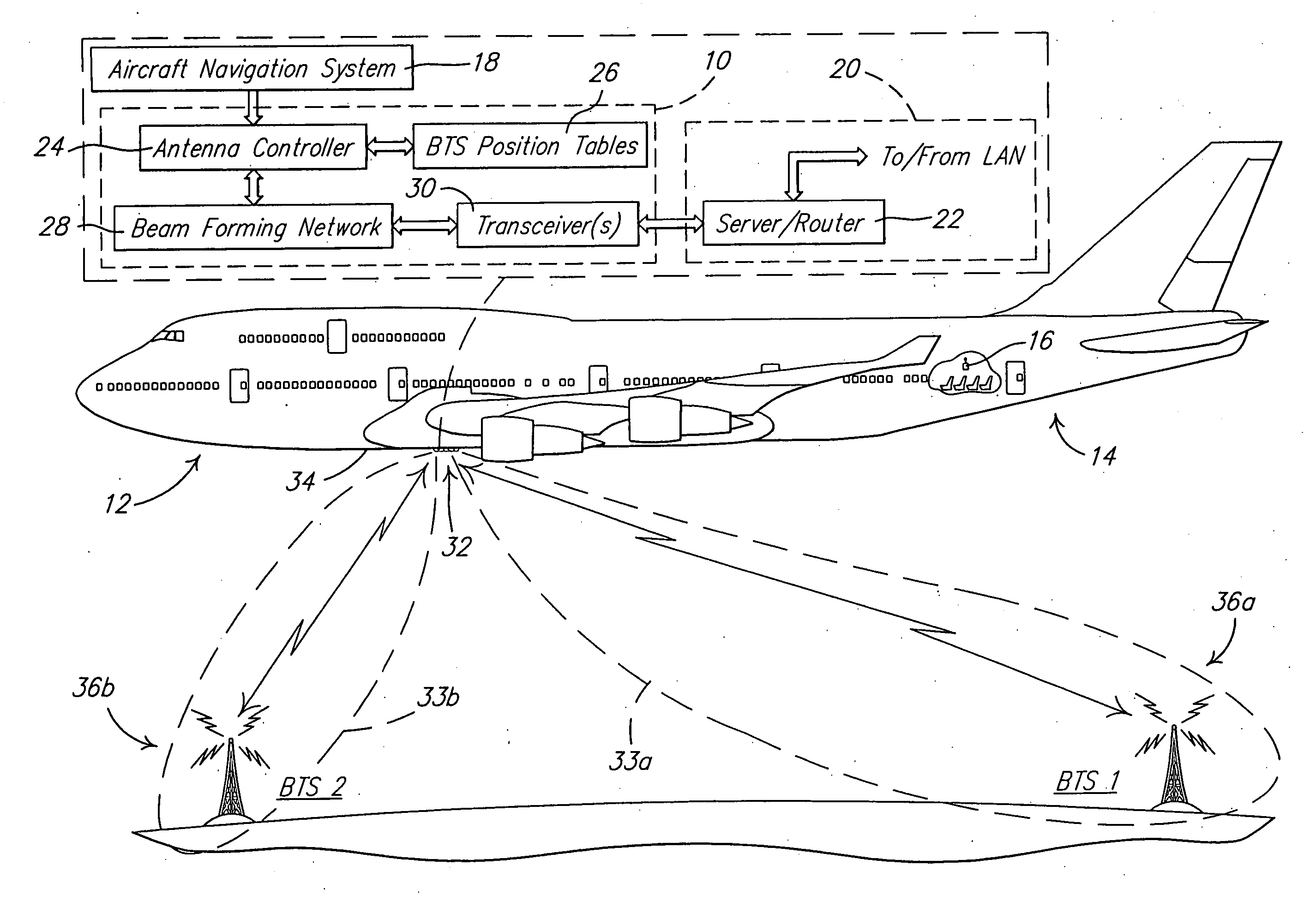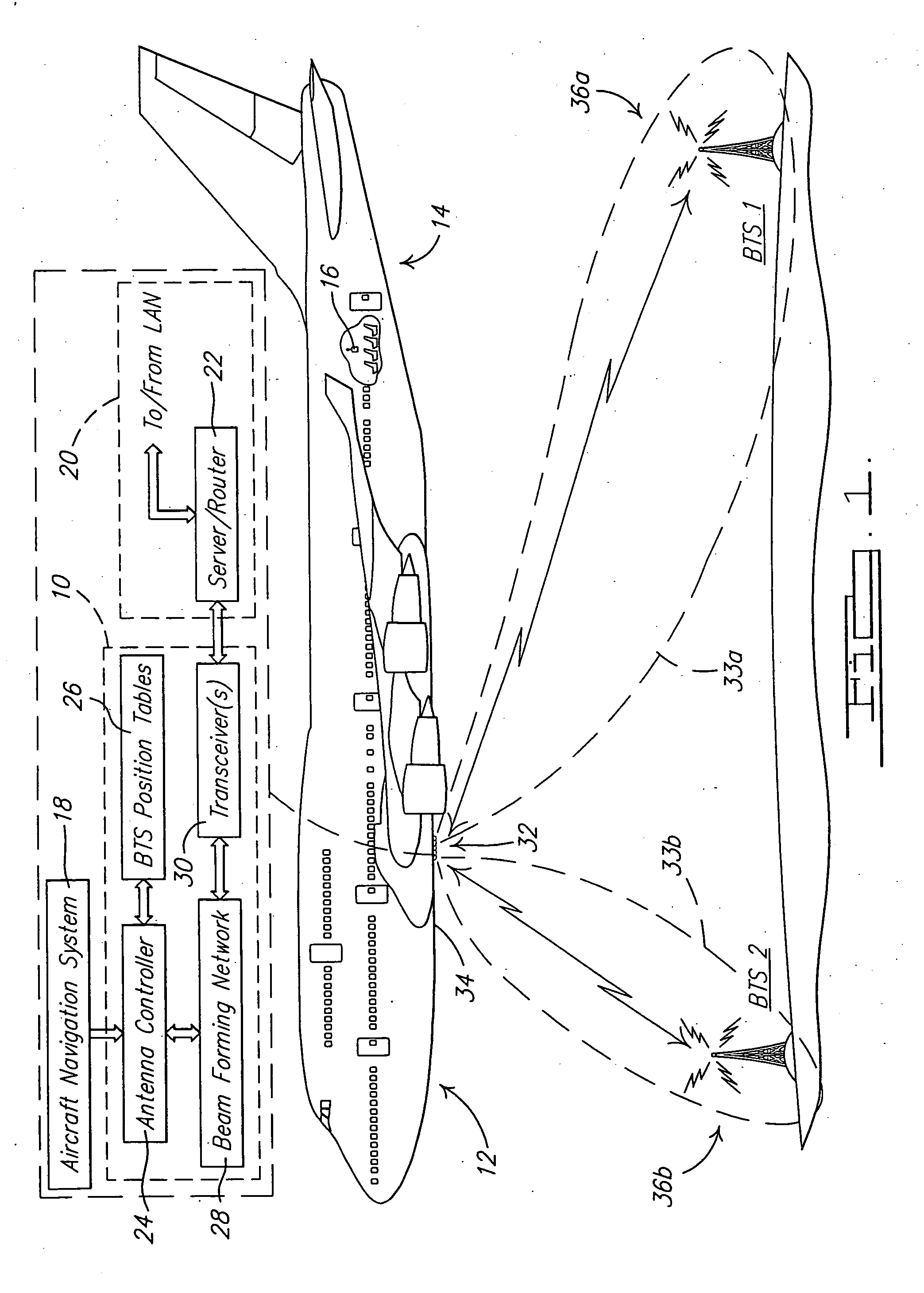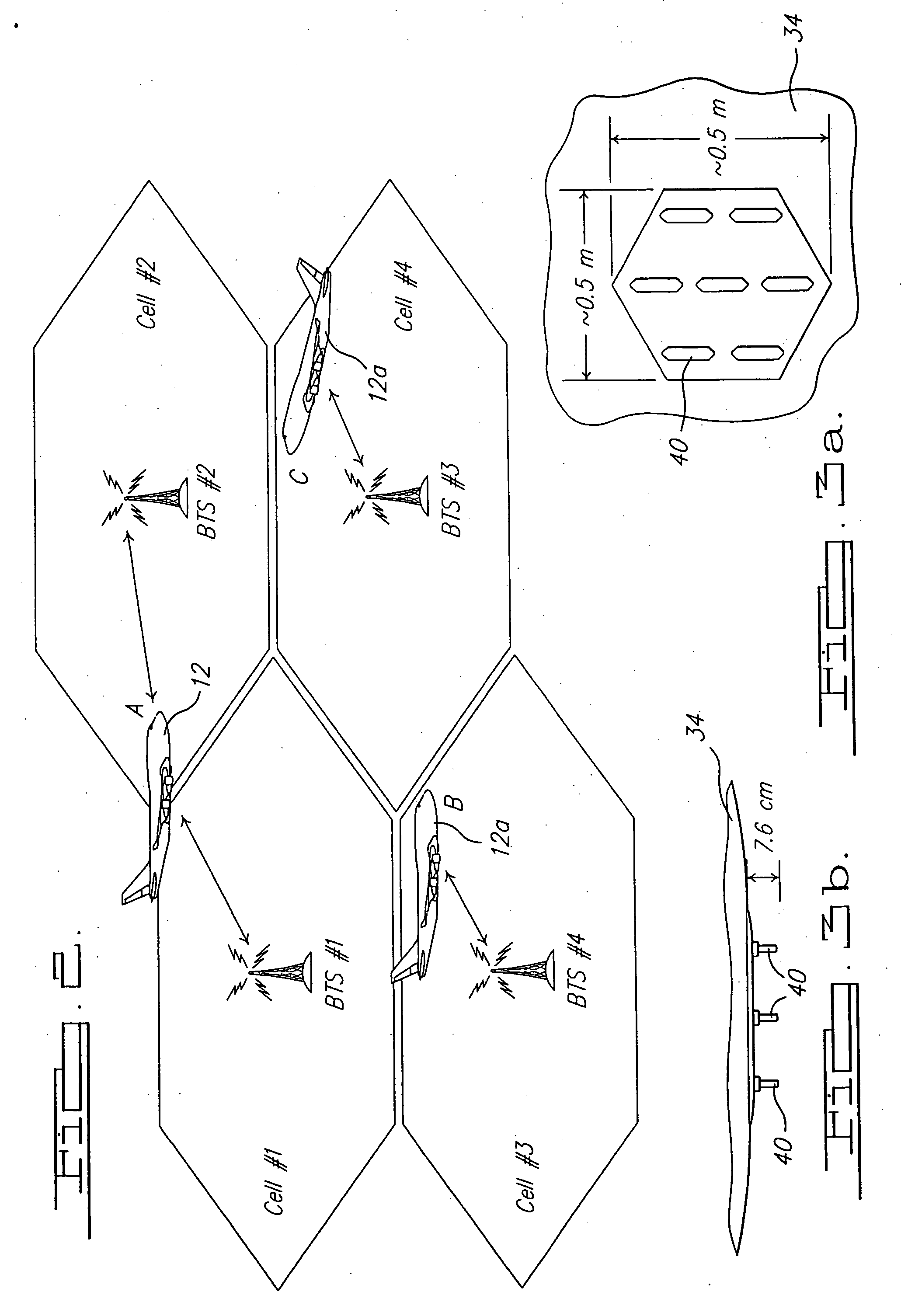Soft handoff method and apparatus for mobile vehicles using directional antennas
- Summary
- Abstract
- Description
- Claims
- Application Information
AI Technical Summary
Benefits of technology
Problems solved by technology
Method used
Image
Examples
Embodiment Construction
[0033] The following description of the preferred embodiment(s) is merely exemplary in nature and is in no way intended to limit the invention, its application, or uses.
[0034] Referring to FIG. 1, there is shown an aircraft radio terminal (ART) 10 in accordance with a preferred embodiment of the present invention. The ART 10 is implemented, in this example, on a commercial aircraft 12 having a fuselage 14. One or more occupants on the aircraft 12 have in his / her possession a cellular telephone 16, which alternatively could form a wireless personal digital assistant (PDA). The aircraft 12 includes an aircraft navigation subsystem 18 and an on-board network 20 that incorporates a server / outer 22 in communication with a local area network (LAN) implemented on the aircraft 12. Although not shown, it will be appreciated that the LAN implemented on the aircraft 12, in one preferred form, makes use of a plurality of wireless access points spaced throughout the interior cabin area of the a...
PUM
 Login to View More
Login to View More Abstract
Description
Claims
Application Information
 Login to View More
Login to View More - R&D
- Intellectual Property
- Life Sciences
- Materials
- Tech Scout
- Unparalleled Data Quality
- Higher Quality Content
- 60% Fewer Hallucinations
Browse by: Latest US Patents, China's latest patents, Technical Efficacy Thesaurus, Application Domain, Technology Topic, Popular Technical Reports.
© 2025 PatSnap. All rights reserved.Legal|Privacy policy|Modern Slavery Act Transparency Statement|Sitemap|About US| Contact US: help@patsnap.com



